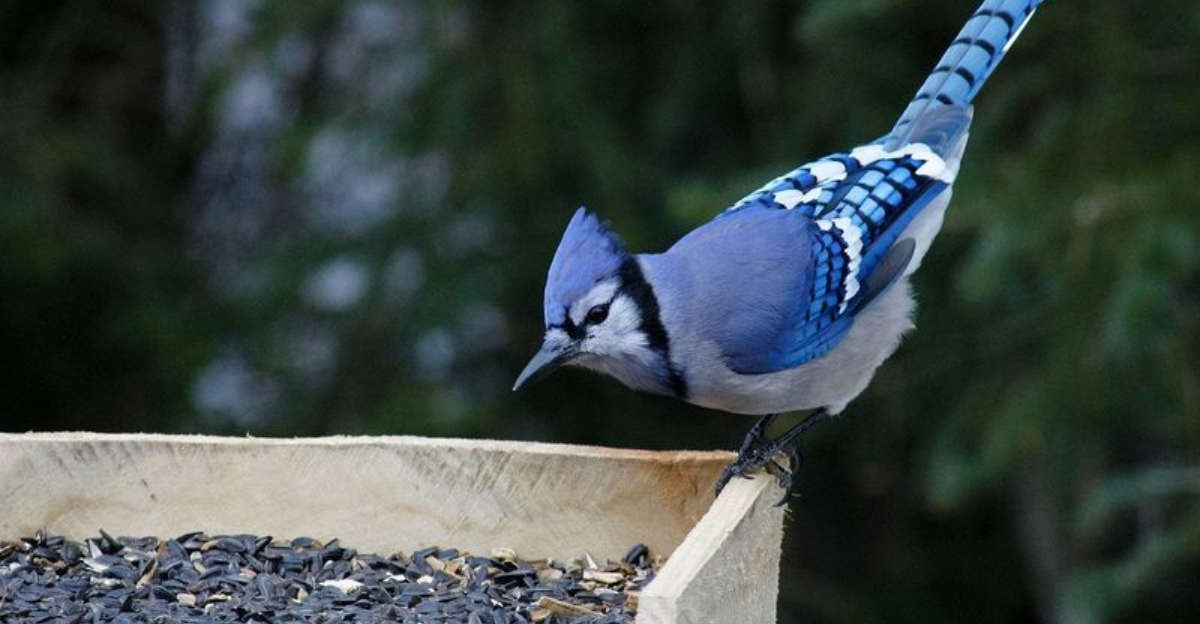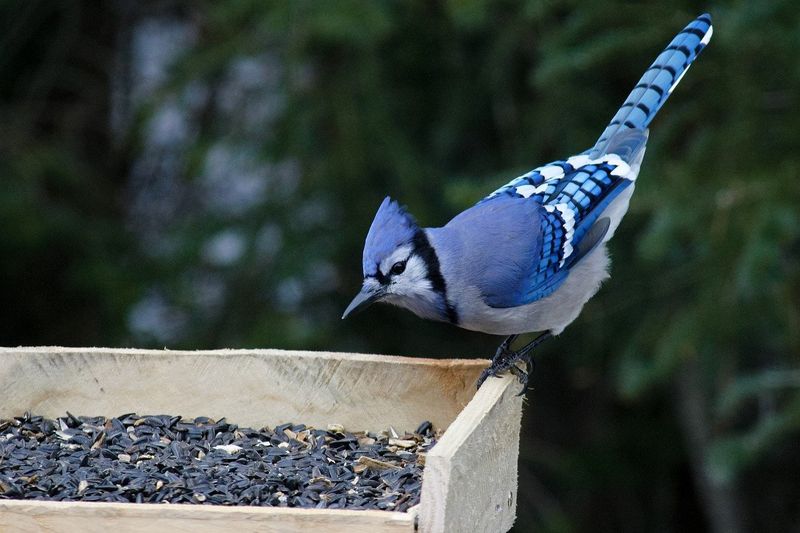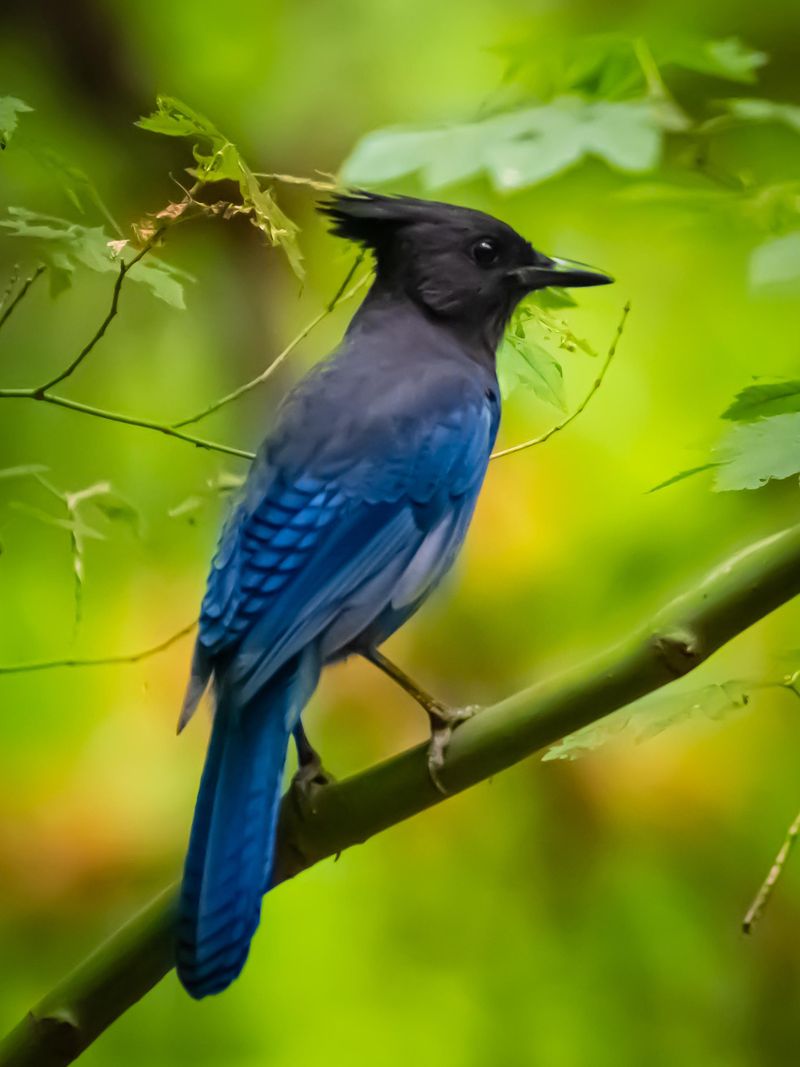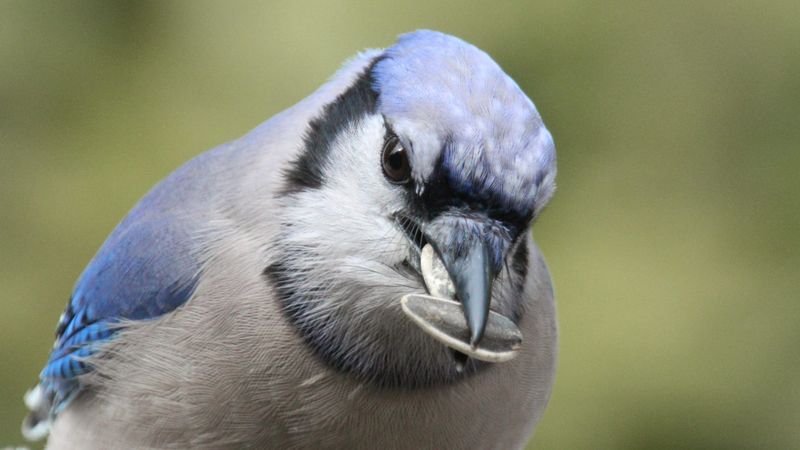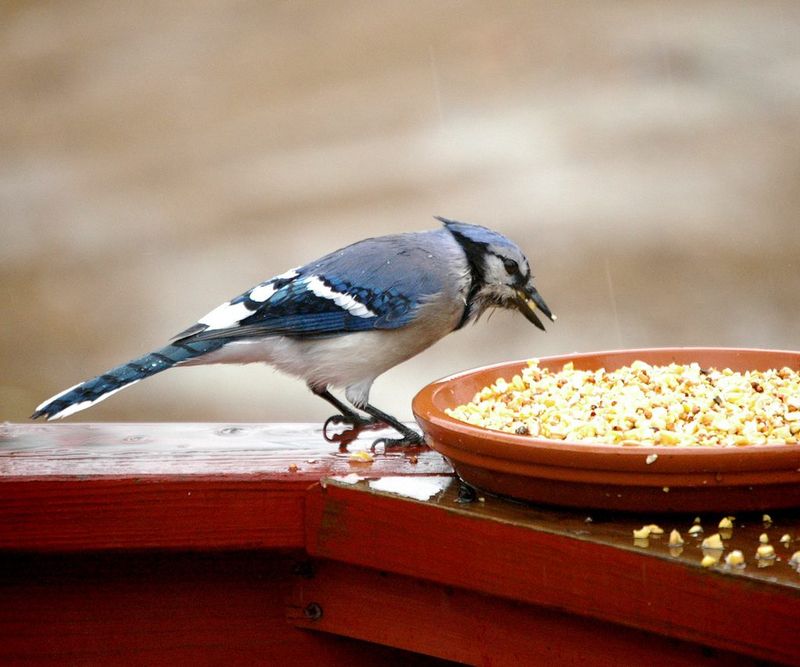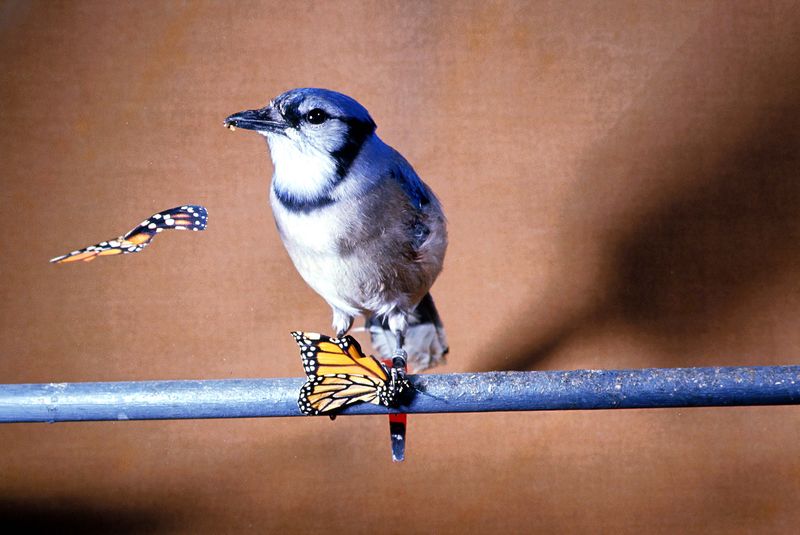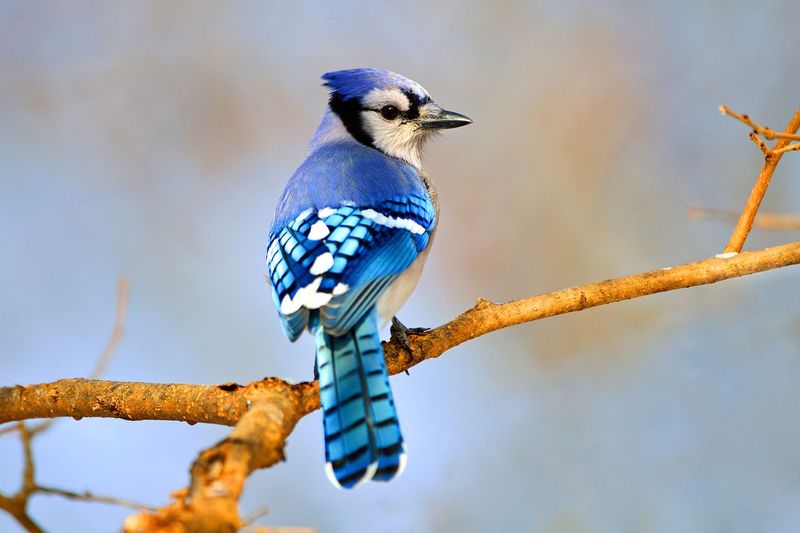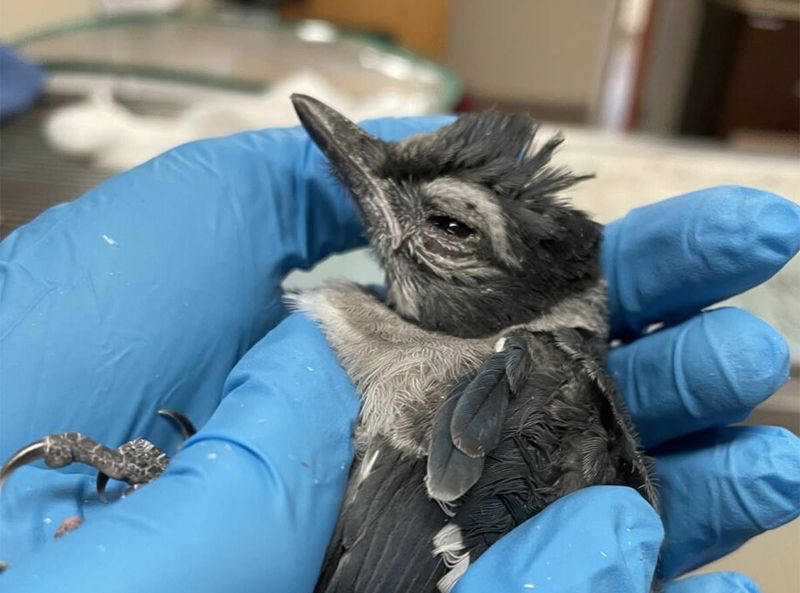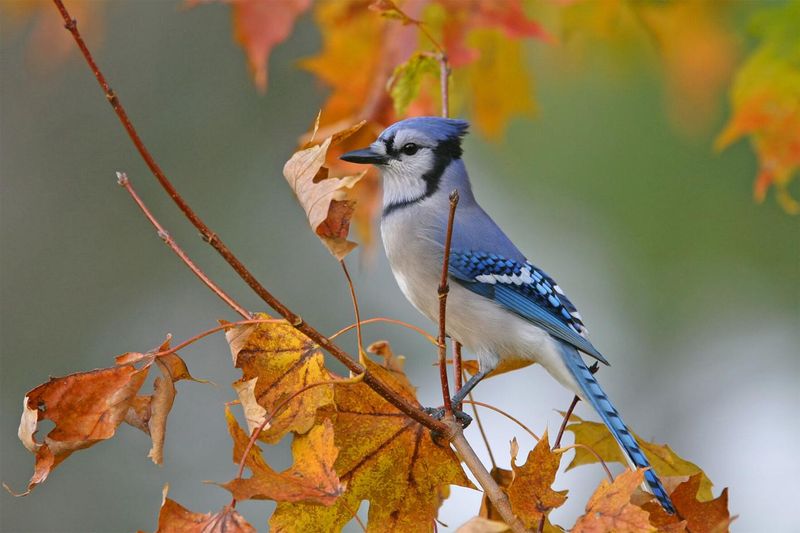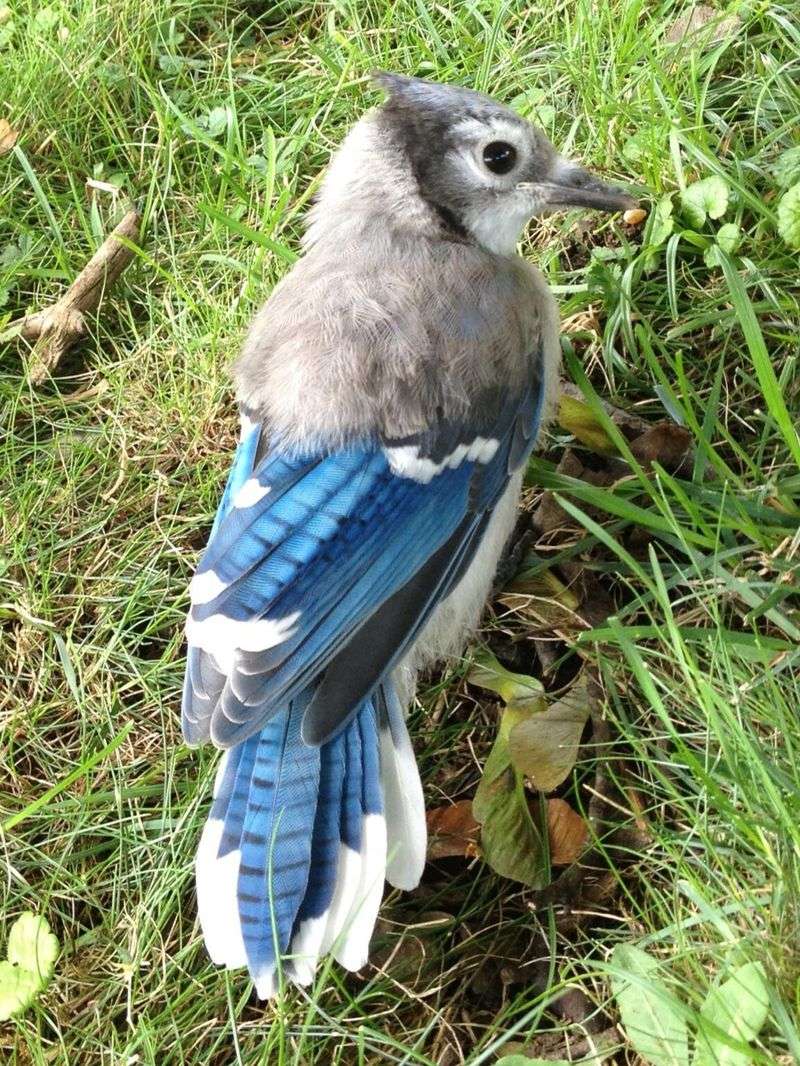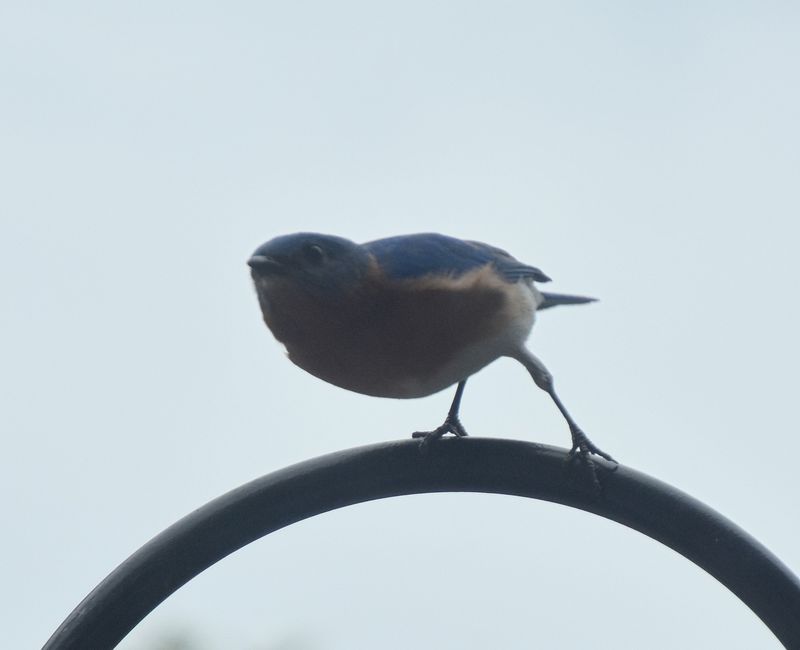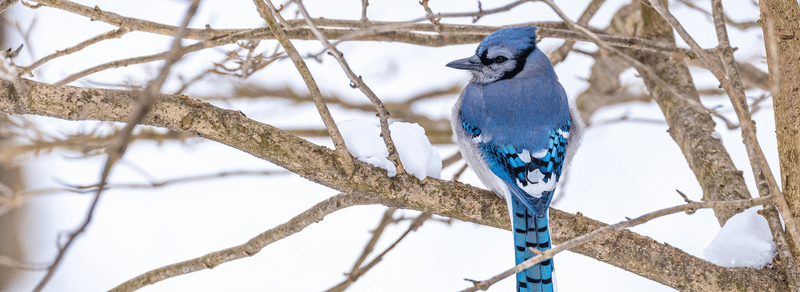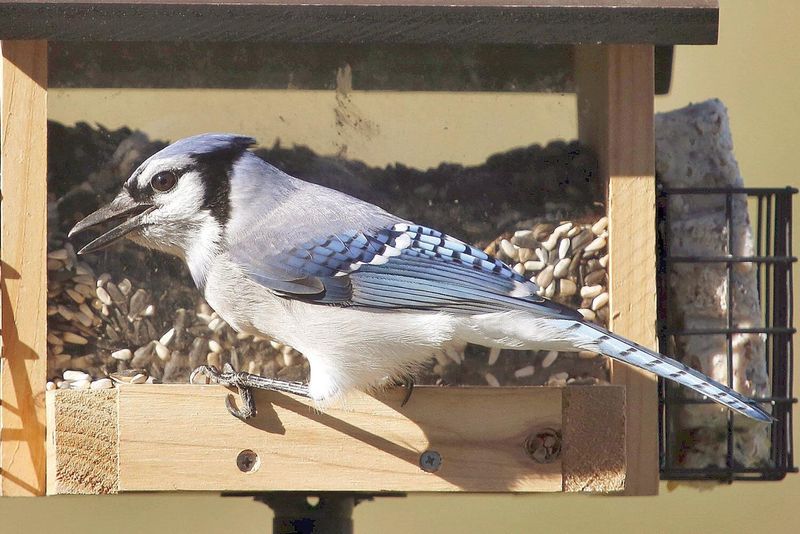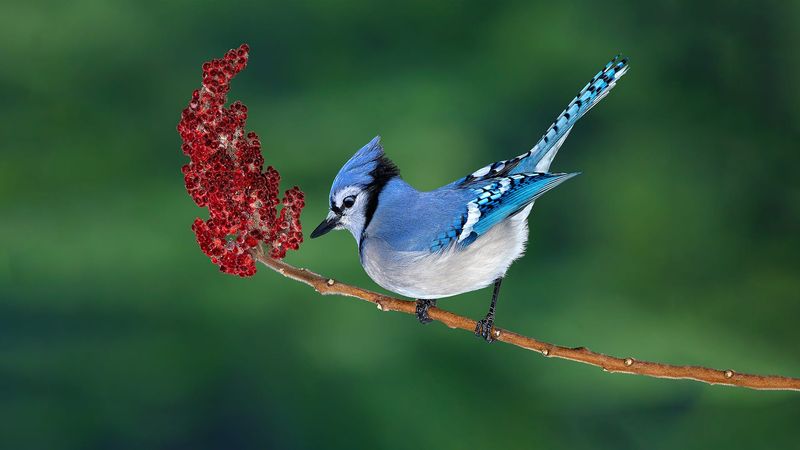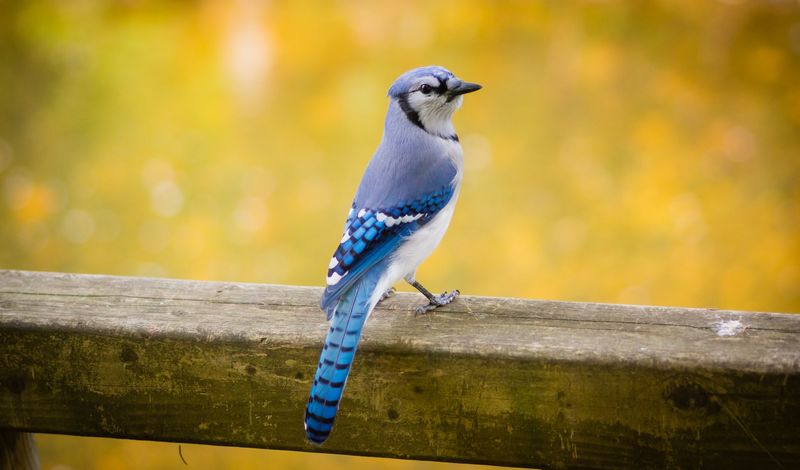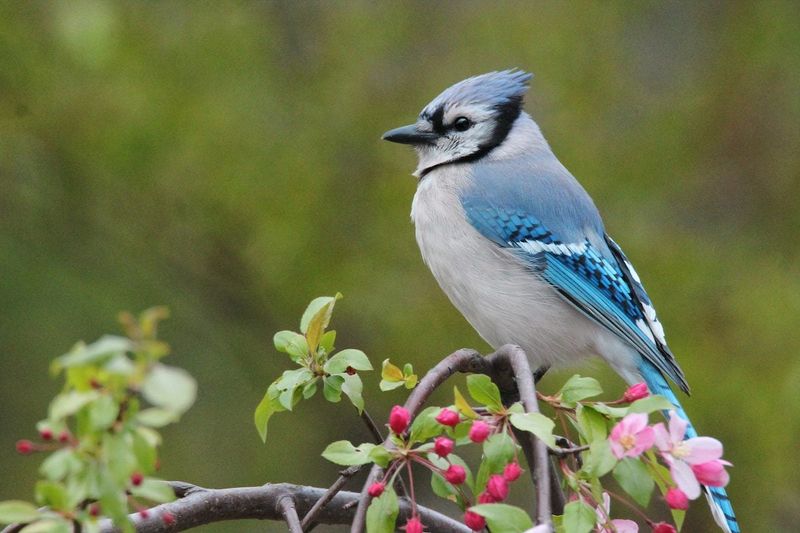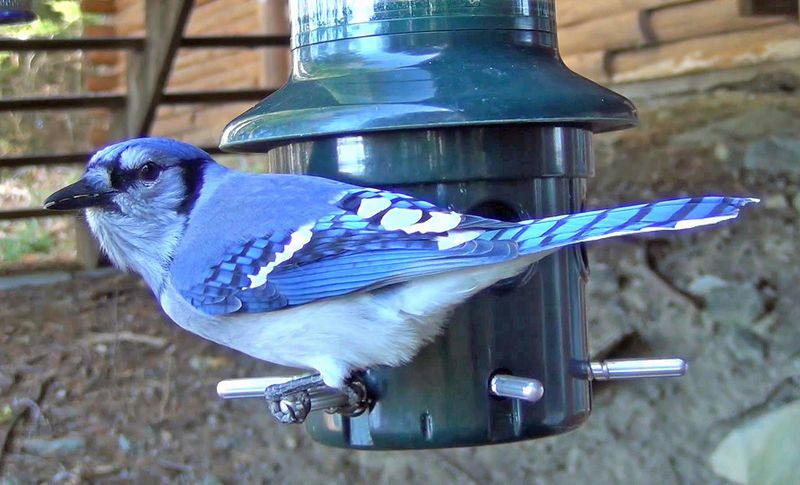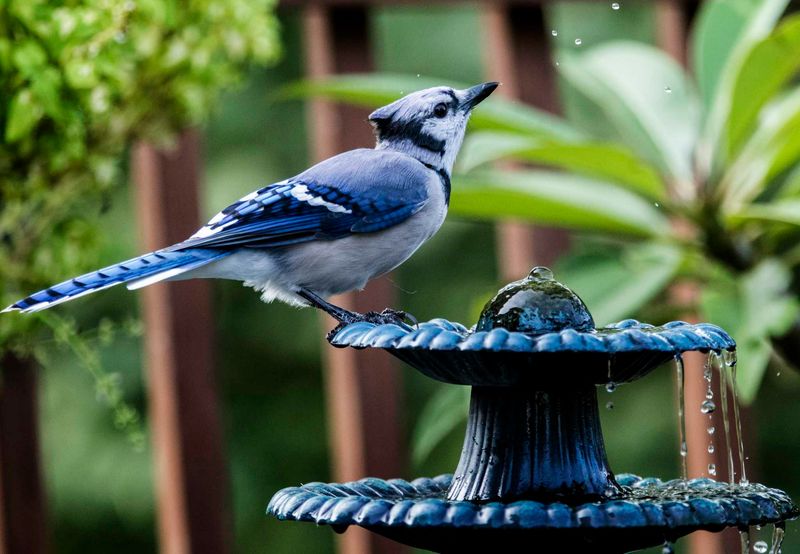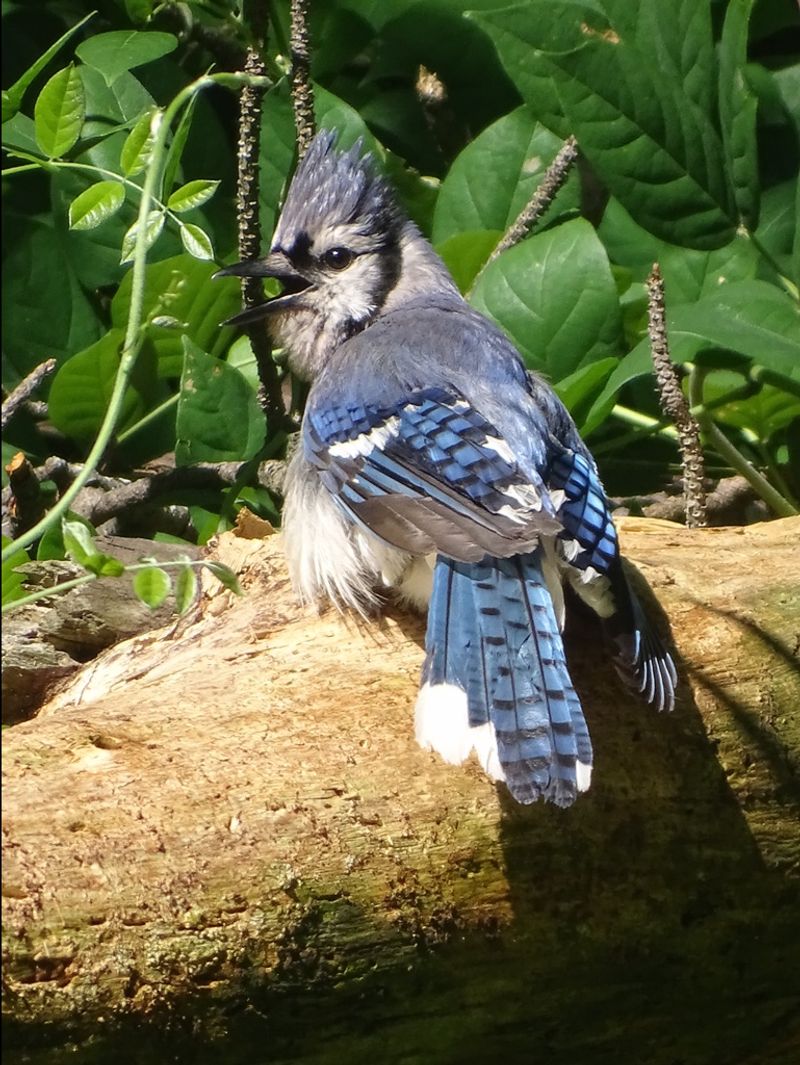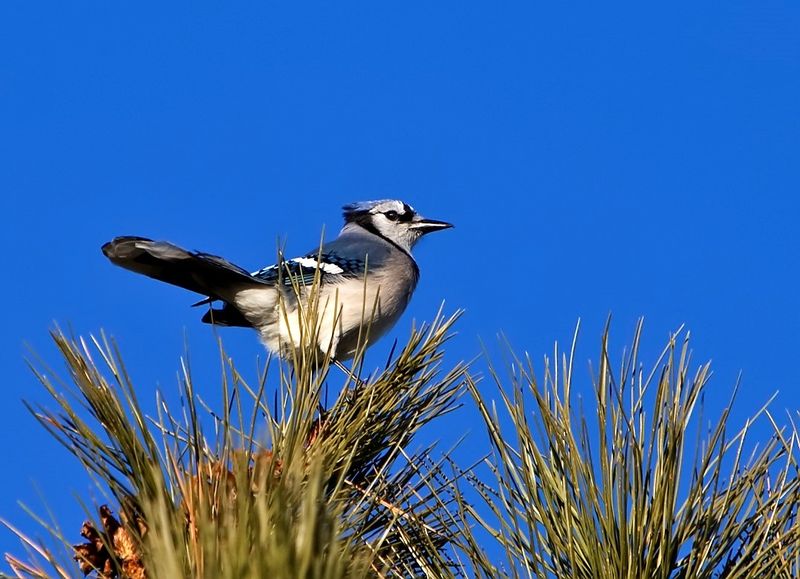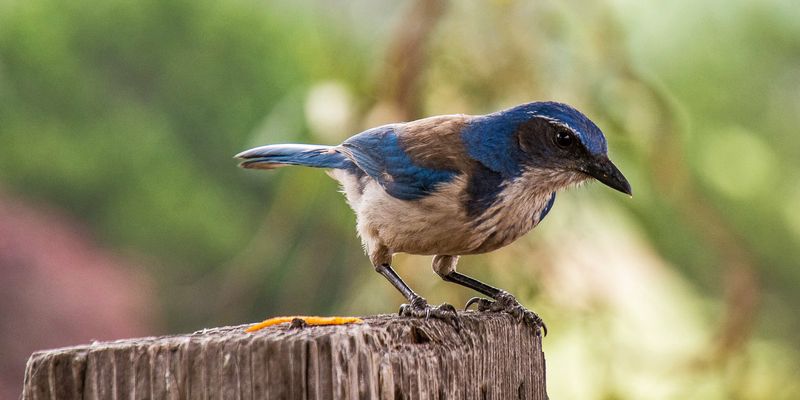While Blue Jays are often admired for their striking blue plumage and curious nature, having them in your yard may present some challenges.
Here’s a detailed look at 20 surprising reasons you might reconsider inviting these boisterous birds into your garden.
1. Aggressive toward other birds
Blue Jays are notorious for their aggressive behavior toward other birds, often dominating feeders and claiming them as their own. Their assertiveness can discourage smaller species from visiting, reducing bird diversity in your yard.
They are known to mob other birds, especially during breeding season, to protect their territory. This behavior isn’t limited to feeders; it extends to nesting areas, where they may drive away potential avian neighbors.
While fascinating to watch, their aggression can disrupt the peaceful coexistence that many bird enthusiasts hope to nurture in their backyards.
2. Extremely noisy
The vocal prowess of Blue Jays can be both impressive and overwhelming. Known for their wide range of calls, from harsh squawks to alarm calls, their noise can be incessant.
This can become particularly bothersome in the early morning hours, disrupting the tranquility of a peaceful morning. For those who cherish quiet moments in their garden, the constant chatter of Blue Jays can be a real nuisance.
While their calls serve vital communication purposes, the volume and frequency can lead to friction with neighbors who might not appreciate the avian opera.
3. Nest raiders
Blue Jays have a reputation as nest raiders, known to steal eggs and even young chicks from the nests of other bird species. This behavior can significantly impact local bird populations, particularly those of smaller birds.
By preying on the vulnerable, Blue Jays can inadvertently reduce the diversity and number of birds that thrive in your area. This natural instinct to raid nests is part of their survival strategy but poses a moral dilemma for those trying to protect and encourage bird diversity.
Gardeners may need to take measures to protect more vulnerable species.
4. Scatter seeds & food
While feeding Blue Jays can be an enjoyable activity, they are known for their messy eating habits. They often scatter seeds and food around, creating unwelcome messes under feeders.
This behavior not only leads to wastage but can also attract unwanted pests like rodents and insects. The scattered seeds may sprout, leading to unwanted plant growth across your garden.
To mitigate this, consider using feeders with trays or selecting specific seeds that Blue Jays are less likely to scatter. Keeping the feeding area clean can also deter pests attracted by the mess.
5. Attract unwanted pests
The presence of Blue Jays can inadvertently attract a variety of unwanted pests to your garden. Their tendency to scatter food invites rodents, such as mice and rats, to feast on the fallen bounty.
Additionally, insects might be drawn to the scattered seeds and leftover food, leading to increased pest activity. This can create a chain reaction, where the attraction of pests leads to further complications, including damage to plants and potential health risks.
Regularly cleaning feeding areas and managing food distribution can help minimize these unwanted visitors.
6. Damage crops
Blue Jays, with their strong beaks and curious nature, can pose a threat to backyard crops. They are known to peck at fruits and vegetables, causing damage to ripe produce.
This behavior is particularly concerning for gardeners who invest time and effort into cultivating their plants. The pecking not only affects the appearance but can also introduce bacteria, spoiling the produce.
Implementing protective measures, such as netting or scare devices, can deter Blue Jays from targeting your crops, allowing you to enjoy a bountiful harvest without the avian interference.
7. Can carry diseases
Blue Jays, like many wild birds, can be carriers of diseases that might spread to other bird species. Their frequent visits to feeders can facilitate the transmission of illnesses, impacting the health of the avian community in your yard.
While they themselves might not always display symptoms, the bacteria and viruses they carry can be harmful, especially to weaker birds. Regular cleaning of feeders and bird baths is essential to prevent disease spread.
Encouraging hygiene in bird feeding areas helps ensure a healthier environment for all avian visitors.
8. Chase away beneficial birds
Blue Jays are known for their territorial nature, often chasing away other birds, including those beneficial to your garden’s ecosystem. Birds like chickadees and nuthatches, which help control insect populations, may be driven away by the dominant presence of Blue Jays.
This displacement can disrupt the natural balance, leading to an increase in pests that these beneficial birds would typically manage.
To maintain ecological harmony, consider providing separate feeding areas or choosing feeders that deter larger birds like Blue Jays, allowing beneficial species to thrive without interference.
9. Steal pet food & human snacks
Blue Jays have a penchant for stealing, often targeting pet food and human snacks left unattended in yards. Their boldness can lead to frustration for pet owners and those who enjoy dining outdoors.
By swooping down and snatching morsels, Blue Jays can quickly become a nuisance. This behavior is not only disruptive but can also lead to food contamination concerns.
To prevent this, it’s advisable to monitor pet feeding times and cover food when not in use. Creating a designated feeding area away from where humans and pets congregate can also help minimize theft.
10. Attack window reflections
Blue Jays are territorial and sometimes mistake their reflections in windows for rival birds. This can lead to persistent attacks on windows, causing disturbances not only to the bird but also to the household.
The repeated pecking and fluttering can be a source of annoyance. This behavior is often observed during the breeding season, when their territorial instincts are heightened.
Placing decals or curtains on windows can help reduce reflections and prevent these attacks. Such measures protect both the Blue Jays from injury and your peace at home from disruption.
11. Highly territorial during nesting season
During nesting season, Blue Jays become highly territorial, often defending their space aggressively. This heightened territorial behavior can lead to conflicts with other birds and even humans who venture too close to their nests.
Blue Jays are known to dive-bomb perceived threats, which can make certain areas of your yard off-limits. This intensity in defending their territory is essential for the protection of their young but can be troublesome for those unaware of nearby nests.
Awareness and caution during nesting season can help mitigate potential conflicts and ensure harmony in shared spaces.
12. Destroy feeders & nesting boxes
Blue Jays, with their powerful beaks, can cause significant damage to bird feeders and nesting boxes. Their size and strength allow them to peck persistently, leading to breakage or the destruction of these structures.
This behavior can be frustrating for bird enthusiasts who invest in quality feeders and shelters to attract a variety of bird species. The constant need to repair or replace these items can become costly.
Selecting sturdy materials and designs that can withstand the force of Blue Jays may extend the lifespan of feeding and nesting installations, reducing maintenance efforts.
13. Hoard food
Blue Jays are known for their food-hoarding behavior, often stashing seeds in multiple locations. While fascinating, this can lead to unintended consequences, such as the sprouting of unwanted plants.
Their habit of burying seeds can contribute to garden chaos, with unexpected plants emerging in flower beds or lawns. This natural inclination to hoard for future scarcity demonstrates their intelligence and survival skills but can challenge garden aesthetics.
For those looking to maintain a tidy yard, managing the types of seeds available and regular garden maintenance can help control the spread of unwanted growth.
14. Steal shiny objects
Blue Jays are attracted to shiny objects, often taking small items like jewelry, coins, or decorations. Their fascination with glistening things can lead to unexpected theft, with cherished items mysteriously disappearing from outdoor spaces.
This behavior, while intriguing, can be frustrating, especially when valuable or sentimental items are involved. To safeguard personal belongings, it’s advisable to store shiny objects indoors or in secure places when not in use.
Understanding their attraction to sparkle can help prevent loss and maintain the enjoyment of observing these intelligent birds.
15. Can attract larger predators
The presence of Blue Jays can inadvertently attract larger predators, such as hawks and owls, to your yard. These predators are drawn by the activity and noise generated by Blue Jays, which can signal an abundant food source.
While some may enjoy observing these raptors, their presence can pose risks to small pets and other wildlife. Creating a balance in your garden by providing cover and protection for vulnerable creatures can help manage the impact of these predators.
Awareness of this potential consequence is essential for those with small animals.
16. Hard to deter once established
Once Blue Jays establish themselves in a yard, they can be challenging to deter. Their intelligence and adaptability enable them to overcome many common deterrents. Efforts to scare them away, such as noise devices or decoys, may have limited success.
Their persistence can be frustrating for those looking to encourage different bird species. Implementing a combination of deterrents, such as physical barriers and changes in feeding practices, may help discourage their continued presence.
Understanding their behavior and adapting strategies accordingly can lead to a more balanced bird community.
17. May peck at people & pets
Blue Jays, when feeling threatened or protective, may exhibit aggressive behavior, including pecking at people and pets. This can be startling and potentially harmful, especially if young children or curious pets are involved.
Their protective nature is most prominent during nesting season, when they are safeguarding their young. Being aware of this behavior and maintaining a respectful distance from their nests can prevent unwelcome confrontations.
Educating family members about Blue Jay interactions helps ensure safe coexistence. Taking precautions, such as supervising pets outdoors, can further mitigate risks.
18. Can spread weeds
The habit of Blue Jays to hoard food, such as seeds and nuts, can lead to the spread of unwanted plants and weeds in your garden. As they bury these items for later consumption, they unintentionally promote the growth of species that can compete with cultivated plants.
This behavior can disrupt garden design and lead to increased maintenance efforts. To manage this, consider monitoring the types of seeds available in feeders and maintaining regular garden upkeep.
Understanding their natural behavior can aid in developing strategies to prevent garden disruption.
19. Reduce diversity in bird populations
The dominant nature of Blue Jays can lead to a reduction in bird diversity in your yard. Their aggressive and territorial behavior often deters smaller, more timid species from visiting feeding and nesting areas.
This can result in a less varied bird population, affecting the ecological balance and enjoyment of birdwatching activities. Encouraging diversity requires deliberate efforts, such as providing multiple feeding stations and habitat features that cater to different species.
By understanding the impact of Blue Jays, garden enthusiasts can take steps to promote a vibrant and varied avian community.
20. Disrupt backyard tranquility
The presence of Blue Jays, with their loud calls and active behavior, can disrupt the peacefulness of a backyard environment. Their constant movement and noise can interfere with relaxation and leisure activities.
For those seeking a serene garden retreat, the vibrant energy of Blue Jays might not align with their vision of tranquility. Creating designated quiet zones or using landscaping to buffer noise can help mitigate this impact.
By balancing the energetic presence of Blue Jays with areas of calm, homeowners can enjoy both the beauty and diversity of their garden.
